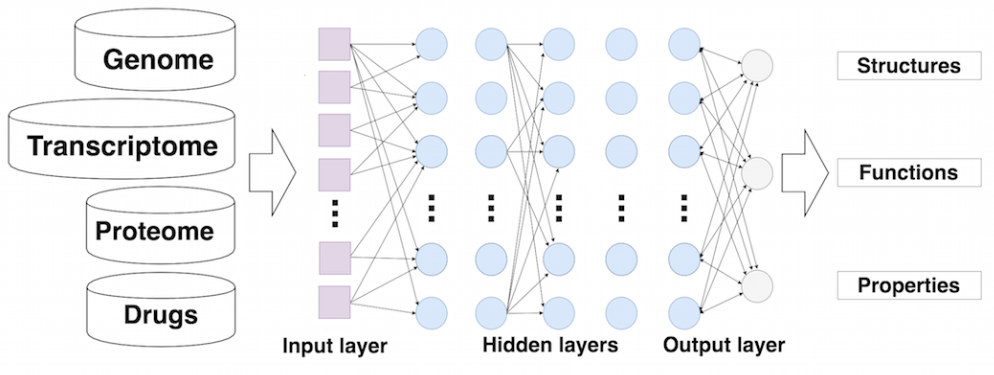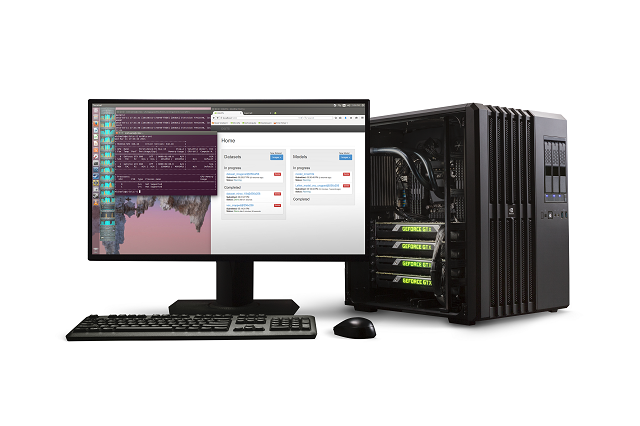Sifting the avalanche of life sciences (LS) data for insight is an interesting and important challenge. Many approaches are used with varying success. Recently, improved hardware – primarily GPU-based – and better neural networking schemes are bringing deep learning to the fore. Two recent papers report the use of deep neural networks is superior to typical machine learning (support vector machine model) in sieving LS data for drug discovery and personalized medicine purposes.
The two papers, admittedly driven by a commercial interest (Insilico Medicine), are nevertheless more evidence of deep neural network (DNN) progress in LS research where large datasets with high dimensionality have long been difficult to handle. Using DNN to train models and produce answers is proving quite effective; in these two studies both straightforward and more complicated neural network techniques were used. Snapshot:
- Drug Discovery. In one study, “Deep learning applications for predicting pharmacological properties of drugs and drug repurposing using transcriptomic data”[i] (accepted by Molecular Pharmaceutics), researchers used a fairly standard fully connected multilayer perceptron In this case there were 977 input nodes for gene expression level data and 271 for pathway activation scores. The DNN was trained with both gene level transcriptomic data and transcriptomic data processed using a pathway activation scoring algorithm. The approach, say the authors, “[A]chieved high classification accuracy and convincingly outperformed support vector machine (SVM) model on every multiclass classification problem.”
- Aging Biomarkers. In the second study – Deep biomarkers of human aging: Application of deep neural networks to biomarker development[ii] (published in the May issue of Aging (Vol 8, No5)) – researchers analyzed the performance of 40 DNN architectures used in modular ensemble of 21 DNNs of varying depth. “The best DNN in the ensemble had 5 hidden layers with 2000, 1500, 1000, 500, and 1 neurons in each, respectively,” report the authors.
Part of what’s interesting here is the broad applicability of the DNN approach. As the authors (listed below) note there are many in silico approaches to drug discovery and disease classification, including efforts to use transcriptional response to predict functional properties of drugs. Neural networks’ natural knack for handling high dimensional data is an important capability in LS. Deep learning has already proven very valuable in a range of activities spanning simple image recognition to physics applications.
Broadly, neural networks try to emulate the way biological neural networks operate. Artificial neural networks are generally presented as systems of interconnected “neurons” which exchange messages between each other. The connections have numeric weights that can be tuned based on experience, making neural nets adaptive to inputs and capable of learning. In essence they can be trained to understand and solve classes of problems.
For example, a neural network for handwriting recognition might be defined by a set of input neurons that are activated by the pixels of an input image. After being weighted and transformed by a function (determined by the network’s designer), the activations of these neurons are then passed on to other neurons. This process is repeated until finally, the output neuron that determines which character was read is activated.
The first study cited here relied on a standard multilayer perceptron (MLP), which is a feed forward artificial neural network model that maps sets of input data onto a set of appropriate outputs. In this instance, researchers worked with data from three cell lines (A549, MCF-7 and PC-3 cell lines from the LINCS project) that were treated with various compounds to elicit gene expression transcriptional profiles. Researchers began by classifying the compounds into therapeutic categories with DNN based solely on the transcriptional profiles. “After that we independently used both gene expression level data for “landmark genes” and pathway activation scores to train DNN classifier.” In total, the study analyzed 26,420 drug perturbation samples. Shown below is a representation of the DNN used in the drug study.

The details of the study are fascinating. Use of all the criteria was key to accuracy and the DNN effectiveness in coping with high dimensionality was a critical enabler.
In the second study, a more complicated ensemble approach proved most effective. Notably, this wasn’t a gene expression data analysis; rather it was based on blood-based markers. Data from roughly 60,000 blood samples from a single laboratory were analyzed. The five most predictive markers – albumin, glucose, alkaline phosphatase, urea, and erythrocytes – were identified. The best performing DNN achieved 81.5 percent accuracy, while the entire ensemble had 83.5 percent accuracy. The paper suggests the ensemble approach is likely most effective for integration of multimodal data and tracking of integrated biomarkers for aging.
 Both studies required substantial compute power including the parallel processing capability of GPUs. NVIDIA assisted by providing early access to its DIGITS DevBox, which is a roughly 30Tflop deep learning machine featuring 4 Titan X GPU. “We also used a 2X Tesla K80 GPU system,” said Alex Zhavoronkov, an author on both papers and CEO of Insilico Medicine. “The original DNN in the molecular pharmaceutics [work] was trained on a Datalytics GPU cluster in New Mexico,” said Alex Zhavoronkov, CEO of Insilico Medicine and an author on both papers.
Both studies required substantial compute power including the parallel processing capability of GPUs. NVIDIA assisted by providing early access to its DIGITS DevBox, which is a roughly 30Tflop deep learning machine featuring 4 Titan X GPU. “We also used a 2X Tesla K80 GPU system,” said Alex Zhavoronkov, an author on both papers and CEO of Insilico Medicine. “The original DNN in the molecular pharmaceutics [work] was trained on a Datalytics GPU cluster in New Mexico,” said Alex Zhavoronkov, CEO of Insilico Medicine and an author on both papers.
It bears repeating that Insilico Medicine was the main driver behind both papers and has a business interest in bolstering its credentials; that said, deep learning is a relatively small community where collaborations between academic, commercial, and technology suppliers are considerable. (For a snapshot of trends at the leading edge see HPCwire article, Beyond von Neumann, Neuromorphic Computing Steadily Advances.)
Insilico, founded in the 2014 timeframe, chose to focus on deep learning and signaling pathway activation analysis, which is an effective way to reduce dimensionality in gene expression data. “We are essentially a drug discovery engine now,” said Zhavoronkov, who has long been familiar with GPU technology having worked for several years at ATI Technologies. He’s also an ex-pat from Russia who has maintained close ties there; Insilico Medicine has grown to a staff of 39 including 22 in Moscow. Eleven are focused exclusively on deep learning.
Zhavoronkov divides the current deep learning community into three segments: one that is using off-the-shelf systems and tools; a second that is pushing the boundary and developing their own tools; and elite third components primarily focused on neural network R&D and developing new paradigms, citing Google DeepMind as one of the latter. “We fall into the middle category but also with domain expertise in drug discovery. There are few companies that have both.”
Perhaps predictably bullish, he said, “Both papers are first in class and demonstrate that deep learning can be very powerful in both drug discovery and biomarker development. In a short time we got over 800 strong hypotheses for both efficacy and toxicity of multiple drugs in many diseases.”
[i] Deep learning applications for predicting pharmacological properties of drugs and drug repurposing using transcriptomic data, Molecular Pharamaceutics, published by the American Chemical Society, http://pubs.acs.org/doi/abs/10.1021/acs.molpharmaceut.6b00248; the manuscript is now posted on the “Just Accepted” service of the ACS. Authors listed: Alexander Aliper, Sergey Plis, Artem Artemov, Alvaro Ulloa, Polina Mamoshina, Alex Zhavoronkov
[ii] Deep biomarkers of human aging: Application of deep neural networks to biomarker development, published in the May issue of Aging (Vol 8, No5), http://www.impactaging.com/papers/v8/n5/full/100968.html. Authors listed: Evgeny Putin, Polina Mamoshina, Alexander Aliper, Mikhail Korzinkin, Alexey Moskalev, Alexey Kolosov, Alexander Ostrovskiy, Charles Cantor, Jan Vijg, and Alex Zhavoronkov




























































